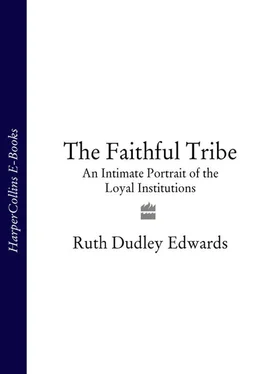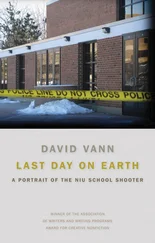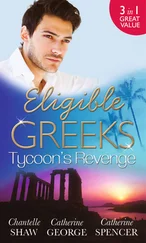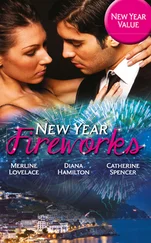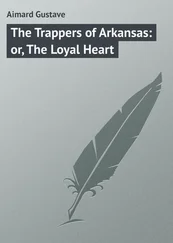We steered well clear of the platform and the speeches, skirted the picnicking Orangemen and their families and headed for the stalls. Having acquired red-and-white flags and hats saying ‘Keep Ulster British’ and ‘Ulster says No’, respectively waving and wearing them, we had our photograph taken at a stall and converted into keyrings. And when we had run out of amusements we headed back down the lane to find the taxi we had prudently booked to take us back to the city centre.
The ironic postscript came that evening in a restaurant. At the table next to us were half-a-dozen women having a very merry dinner with much wine and laughter. When we fell into conversation we found they were celebrating having made a vast amount of money running food stalls at Edenderry. They did this every year. And they were all Catholics.
It was seven years before I went back, this time as a journalist with guinea-pigs in tow: Priscilla, an American Protestant, and, from Dublin, Bridget and Emily Hourican, Catholic university students. In Belfast, on the eve of the Twelfth, we were briefed by academic and political friends over dinner. The mood was sombre to begin with. In the hope of provoking retaliation, the IRA had murdered a prominent loyalist and riddled with bullets the house of the Democratic Unionist Party (DUP) MP, the Reverend Willie McCrae. Later we cheered up. I was a great deal less ignorant about Northern Ireland now, yet I was amazed to hear from the McGimpseys, Orangeman Chris and Orangewoman Joyce, that they saw the Order as predominantly a social organization; Joyce waxed eloquent about the socials and dances.
We repaired late to a couple of massive bonfires, built communally in Protestant areas over several days with anything from cardboard to obsolete refrigerators; large numbers of people stood around drinking and making amiable chat. My contingent were in merry form by then and disappointed that there was insufficient carousing. They learned the words of ‘No Pope of Rome’, which was being played in the background and is an old favourite of mine. It is elegiac, a kind of Orange aisling , * a vision of what life might be in a Utopian Northern Ireland, though, like most modern hard-line sectarian songs, it was composed in Scotland. Sung to the tune of ‘Home on the Range’, the chorus runs:
No, no Pope of Rome,
No chapels † to sadden my eye, No nuns and no priests, No rosary beads, Every day’s like the Twelfth of July. I wrote afterwards:
When I last saw the parade, it was in blazing sunshine. This time it poured with rain. We collected our beer from the Sandy Row off-licence and settled on a stone wall nearby, now augmented by Gus Legge, a University College Dublin engineering student and Hourican friend who had been fired by their example to come up from Dublin independently. The first differences emerged over the paraphernalia. Priscilla, Emily and I were happy as a gesture of courtesy to wear King Billy or Ulster Flag hats and wave Union Jacks; Bridget balked at the flag but wore a hat and carried a baton decorated in red, white and blue. Gus eschewed all insignia; he felt they had political overtones and would not have waved their republican equivalents. However, he did graciously accept from me the present of a keyring which on one side said ‘Keep Ulster Tidy’ and on the other ‘Throw your litter in the Irish Republic’. *
I love the parade. I love the music; if you’ve never heard the Eton Boating Song played by fife and drum, you haven’t lived. I love the daftness of some of the decorations. Ferociously muscly chaps bash drums adorned with politically-chosen flowers – orange tiger lilies or sweet william. I love trying to work out why in several groups just a few will have red or white carnations in their bowler hats. Are they office-holders in the lodge? Are some of the bowlers rounder than some of the others for significant reasons, or has a hatter gone out of business? Why was one bowler sporting a fern and another a sprig of heather? And why were not more of them sprouting the tiny plastic Union Jacks?
I love the banners – the pictures, the variety, the often baffling biblical, Irish and Scottish historical references. I love the eclecticism of a parade that includes lodges called Ark of Freedom, Rev. W. Maguire Memorial Total Abstinence, Prince Albert Temperance, Prince of Orange, Mountbatten, Martyrs of the Grassmarket – Edinburgh, True Blues of the Boyne, Martyrs Memorial (the name of Ian Paisley’s church, though he is in fact in the Independent Orange Order † ), the Queen Elizabeth Accordion Band, the Rising Sons of India, the Defenders, the Protestant Boys and the Loyal Sons of County Donegal. Contemporary politics was occasionally in evidence, with a clip-on ‘NO DUBLIN INTERFERENCE’ attached to a handful of banners. ‘I didn’t know there were that many Prods in Ireland,’ observed Priscilla.
I love the taxis. They arrived at infrequent intervals, decorated according to the enthusiasm of the proprietor with anything from a single Union Jack to full regalia – King Billy banners, large flags, bunting and a multiplicity of political flowers. Their purpose was threefold: to transport Orangemen too old or frail to march with their lodges, drums too heavy for anyone to carry for five miles and also to pick up those who faltered along the route. I loved the moment when a dogged aged marcher dropped out, still smiling bravely, hailed an oncoming taxi uncertainly and was eventually assisted by a functionary who stopped the cab and the entire procession and helped him in. The fact that such a disciplined parade would stop unexpectedly to accommodate a falterer was typical of the humanity of the whole event. There was even a wheelchair.
I love the daft mix of clothes. From the ultra-disciplined – flute bands in vulgar brightly-coloured uniforms which depending on your perception were quasi-military, ocean-liner steward or cinema usher, complete with little caps with tassels, epaulettes and the lot – through kilts, trews, tam o’shanters, Californian drum majorettes’ uniforms, complete with short skirts, white socks and white shoes, older women in sensible skirts and stout shoes, chaps with ponytails, chaps in shirt-sleeves, one man in a dinner-jacket, to the most familiar image – the men in suits and bowlers with the sashes. There were people carrying pikes, staves, batons, drums, pipes, flutes, tin whistles and umbrellas. Then there were the kids who ranged from five-year-olds of both sexes in full uniform at the head of a lodge to various tracksuited individuals or toddlers in dresses and waterproof jackets holding on to banner-cords. A few people had their faces painted red, white and blue; several others opted for coloured hair, which in a surprising number of instances ended up green.
I love the lack of ageism. The fact that, apparently unselfconsciously, lodges could accommodate marchers from toddlers to totterers.
I love the fact that they are terrifically disciplined for the first mile or so, while the TV cameras are on them; in fact, when they catch sight of them, there is extra special twirling of batons, straighter shoulders and even more histrionics on the drums.
I love the signs of fraying of tempers when they got to the third mile and were soaked through. In one accordion band the girls got stroppy with their male leaders and a full-scale rebellion about what was to be played next had to be resolved. In mixed bands like this you could especially see the social importance of the Orange Order. Joining the Sandy Row Prince of Orange Accordion Band must be the local equivalent of joining the Young Conservatives in Surrey.
I love the fact that there was much chatting with the crowd once the heat was off, that people like us were intent on locating those we knew and shouting and waving at them – it was an important form of recognition. We swelled with pride when we spotted a McGimpsey and received a wave.
Читать дальше
